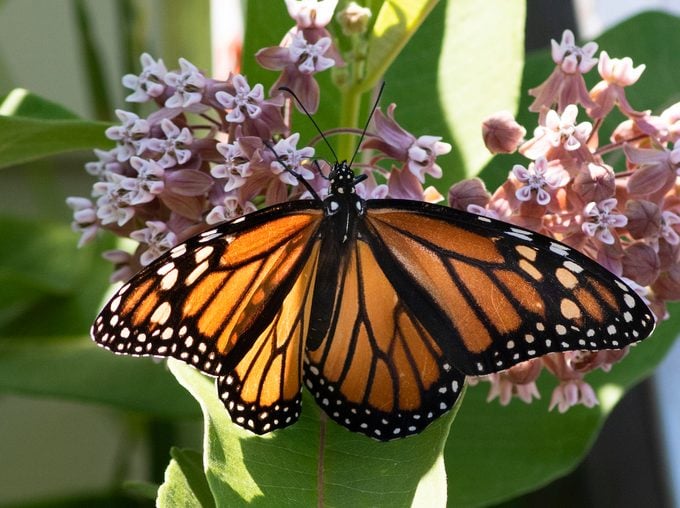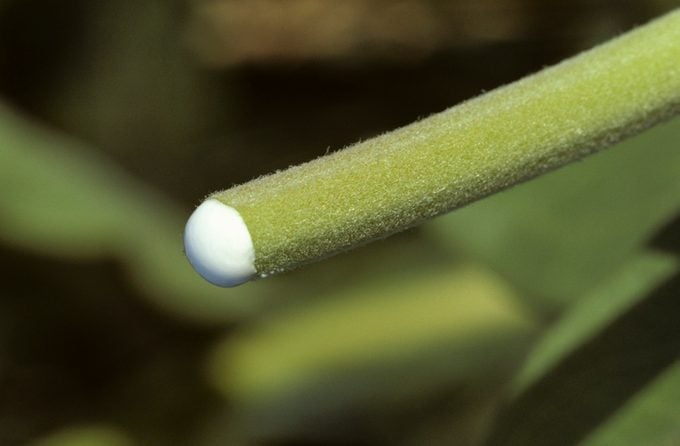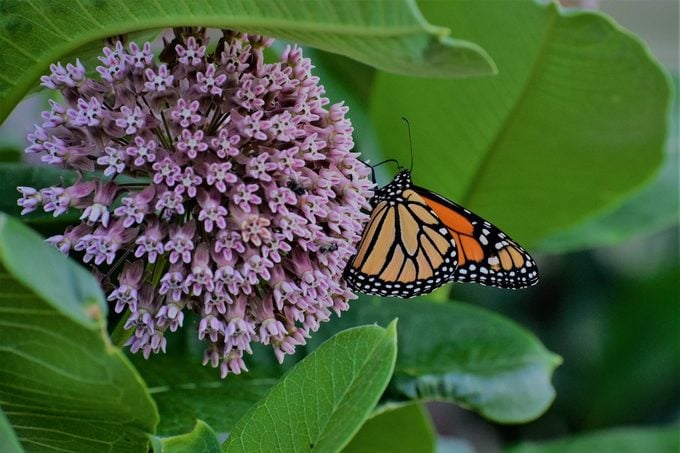Is Milkweed Poisonous to People and Pets?
Updated: Sep. 01, 2022
Gardeners know that milkweed helps monarch butterflies and caterpillars. But is milkweed poisonous to humans, dogs and cats?

When you see a monarch butterfly floating through your garden, the winged visitor may be looking for milkweed plants to lay eggs on, starting a new chapter in its life cycle. Milkweed is an essential host plant for monarch caterpillars. But is milkweed poisonous to us or our pets?
Gardeners plant milkweed to help increase endangered monarch populations. Monarch caterpillars rely on milkweed plants as their only food source. You can see the milky sap that this plant is named for leaking out from the stem or leaves when any part of the plant is broken. This sap contains toxins called cardiac glycosides, or cardenolides.
Eating milkweed makes the caterpillars taste bad, so they’re less likely to be preyed on by birds and other potential monarch predators. Milkweed flowers are beneficial to adult monarch butterflies, providing nectar that helps fuel them on their long migration journey. The star-shaped flowers also provide nectar for bees and other pollinators.
However, you do need to be aware of milkweed’s toxic elements. The plants can be lethal to animals and also pose risks to humans.
Find out what (and how) monarch butterflies eat.
Is Milkweed Poisonous to Dogs?

Milkweed sap is toxic to animals, including pets and horses, if consumed in large quantities. The ASPCA reports that milkweed can contribute to poisoning in dogs and cats.
Cardiovascular warning signs from any kind of milkweed ingestion include abnormal heart rhythm and rate. Also be aware of gastrointestinal problems, which can include nausea, drooling and vomiting, or central nervous system symptoms like dilated pupils, tremors or seizures.
If you suspect that your pet has ingested any part of the milkweed plant, contact your veterinarian or a pet poison hotline. This also applies to a situation where a pet has eaten monarch butterflies or caterpillars. A trip to the vet will allow for a full evaluation. In most cases, your furry friend will be back to good health with rapid intervention and proper care.
Pet owners can take some comfort in knowing that milkweed poisoning in dogs and cats is fairly uncommon since the plant has an unpleasant bitter taste that acts as a deterrent. You could also fence off your butterfly garden to block pets from accessing milkweed plants.
Check out 10 pet friendly indoor plants for dog and cat owners.
Is Milkweed Poisonous to Humans?
It isn’t recommended for humans to eat milkweed either. Do not ingest any part of the plant, including the leaves, stems, seed pods and roots. The good news is milkweed doesn’t taste very good.
All parts of the plant can cause nausea, gastric discomfort, physical weakness, and heart rhythm changes and respiratory problems if eaten. Milkweed sap can also cause irritation to your skin or eyes. We recommend wearing garden gloves when handling these plants. Wash your hands with soap and water if you have touched or handled milkweed and avoid contact with your eyes.
Take the time to teach children how to identify milkweed in your backyard, neighborhood gardens and parks. Tell them that milkweed is poisonous to humans.
Psst—avoid growing and touching these irritating and poisonous plants.
Keep Growing Milkweed

Even though milkweed contains toxins that can be harmful to pets, livestock and people, monarch butterflies need these plants. Gardeners should continue to grow milkweed to support monarch populations.
Do keep in mind that not all milkweed species are the same when it comes to their toxic nature. For instance, according to the Monarch Joint Venture, common milkweed is less toxic than non-native tropical milkweed.
You may spot common milkweed growing in yards, open fields, borders, meadows and along roadways. These adaptable plants self-seed and will thrive in a variety of growing conditions east of the Rocky Mountains. Also consider planting other varieties native to your specific area, such as showy milkweed, swamp milkweed and butterfly weed.
